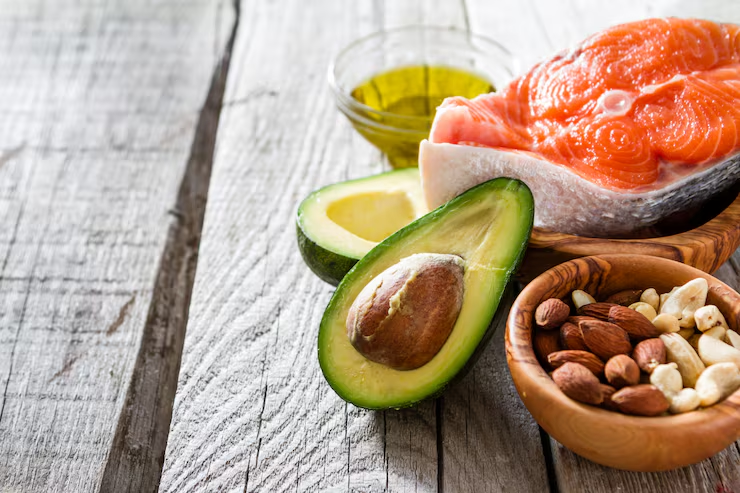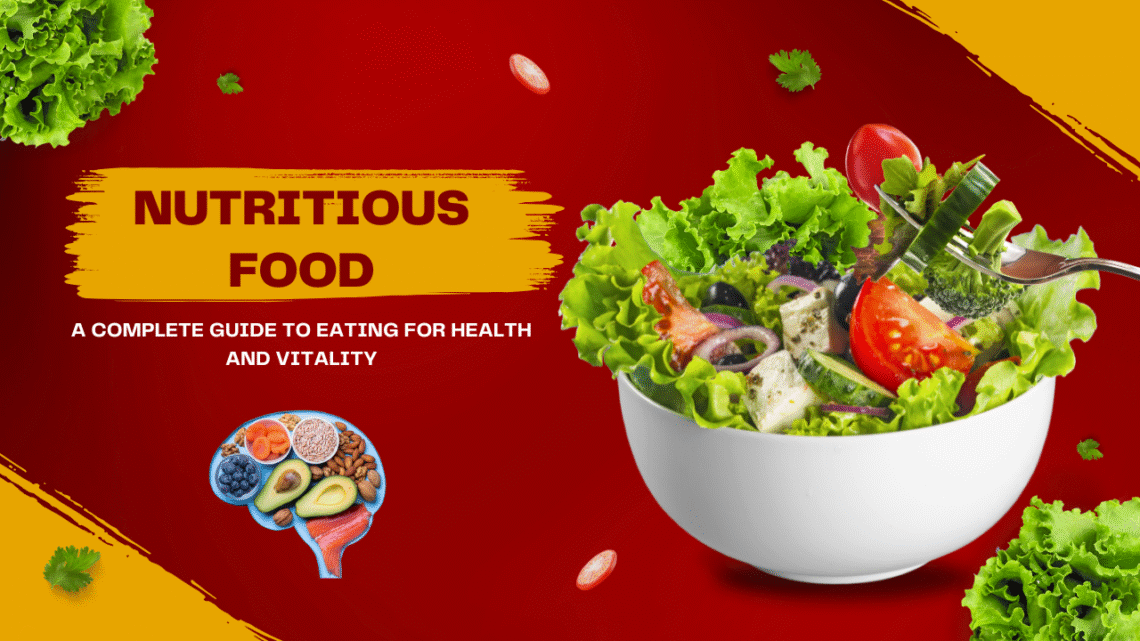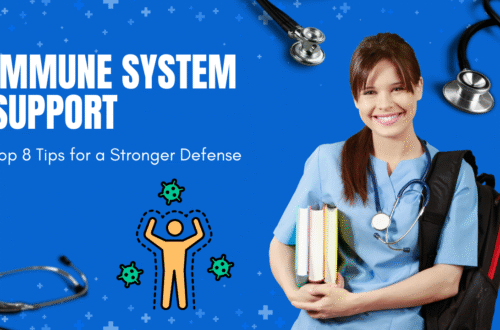In our fast-paced modern world, making nutritious food choices can feel like a challenge. With tempting convenience foods, fad diets, and misinformation everywhere, it’s easy to lose sight of what our bodies truly need. But eating nutritious food doesn’t have to be complicated. In fact, it’s one of the most empowering choices you can make for your health.
Understanding nutritious food is essential for building a healthier and more energized lifestyle. In today’s world of fast food and processed snacks, it’s easy to lose sight of what your body truly needs. This comprehensive guide helps you rediscover the power of nutritious food by breaking down its meaning, benefits, and practical ways to incorporate it into your daily routine.
Nutritious food refers to meals that are rich in essential nutrients like vitamins, minerals, fiber, healthy fats, and lean proteins. These foods fuel your body, support immune function, improve mental clarity, and reduce the risk of chronic illnesses such as heart disease, diabetes, and obesity. Eating nutritious food doesn’t mean you have to give up flavor or enjoyment. In fact, with the right choices, your meals can be both delicious and health-boosting.
This guide also outlines the top 8 tips for adopting a nutrient-dense diet—from choosing whole foods and colorful vegetables to staying hydrated and practicing portion control. Whether you’re new to healthy eating or looking to refine your habits, understanding the importance of nutritious food can transform your well-being and inspire lifelong positive changes. Make every bite count by choosing foods that nourish and protect your body.
What Is Nutritious Food?

Nutritious food provides your body with the essential nutrients it needs to function optimally. These include:
- Macronutrients: Carbohydrates, proteins, and healthy fats.
- Micronutrients: Vitamins and minerals like vitamin C, iron, calcium, and potassium.
- Fiber: Supports digestion and helps regulate blood sugar.
- Water: Essential for every bodily function.
Nutritious food is not just about low calories—it’s about high-quality fuel that energizes, repairs, protects, and sustains.
Why Nutritious Food Matters
Eating nutritious food consistently:
- Boosts energy and mental focus
- Improves immune function
- Supports heart and brain health
- Reduces the risk of chronic diseases like diabetes, obesity, and cancer
- Promotes healthy weight and digestion
- Improves mood and sleep quality
- Enhances skin, hair, and overall appearance
Top 8 Tips for Eating Nutritious Food
- A strong foundation for any nutritious food plan begins with prioritizing whole, minimally processed foods. These foods are rich in natural nutrients like vitamins, minerals, fiber, and antioxidants, and they play a crucial role in supporting your overall health. Focus on including a wide variety of nutritious food options such as colorful fruits and vegetables, which are packed with disease-fighting phytonutrients. Whole grains like brown rice, oats, and quinoa provide sustained energy and digestive support through their fiber content.
- Legumes—including beans, lentils, and chickpeas—are excellent plant-based sources of protein and fiber, making meals both filling and nourishing. Nuts and seeds, like almonds, chia, and flaxseeds, contribute healthy fats, protein, and essential micronutrients to your diet. Lean proteins, including fish, eggs, chicken, and tofu, support muscle maintenance, hormone production, and immune function.
- Choosing whole foods over processed alternatives reduces your intake of added sugars, sodium, unhealthy fats, and artificial ingredients. By centering your meals around nutritious food in its natural form, you’ll enjoy more balanced nutrition, increased energy levels, and better long-term health. This simple yet powerful shift in your eating habits can dramatically enhance your well-being and reduce the risk of chronic diseases.
Whole foods retain their natural nutrients and fiber, unlike highly processed foods that are often stripped of their goodness and loaded with sugar, salt, and unhealthy fats.
Tip: Shop the perimeter of the grocery store where whole foods are typically located.
2. Eat a Rainbow of Vegetables and Fruits
Colorful fruits and vegetables are a cornerstone of any nutritious food plan. They are packed with antioxidants, vitamins, and phytonutrients that help fight inflammation, boost immunity, and protect the body from chronic diseases. Each color group provides unique benefits—red foods like tomatoes and strawberries support heart health, orange and yellow produce like carrots and mangoes enhance eye and skin health, green vegetables like spinach and broccoli detoxify the body, and blue/purple foods like blueberries promote brain health. By including a rainbow of produce in your meals, you ensure a diverse intake of nutrients essential for a balanced and nutritious food lifestyle.
- Red (tomatoes, strawberries) – Heart health
- Orange (carrots, sweet potatoes) – Eye and skin health
- Green (spinach, broccoli) – Detoxification and immune support
- Blue/Purple (blueberries, eggplant) – Brain health and aging
- White (garlic, cauliflower) – Anti-inflammatory and immune-boosting
Tip: Fill half your plate with fruits and vegetables at each meal.
3. Choose Lean Proteins
Protein is essential for building muscles, enzymes, hormones, and supporting immune function. Choose:
- Animal sources: Chicken, turkey, eggs, fish, low-fat dairy
- Plant-based: Lentils, beans, tofu, tempeh, quinoa
Avoid heavily processed meats like sausages, bacon, and deli meats which can be high in sodium and preservatives.
Tip: Include a source of protein in every meal to keep you full and maintain stable blood sugar.
4. Incorporate Healthy Fats

Healthy fats are a vital component of a nutritious food plan. They support essential body functions like brain health, hormone production, and the absorption of fat-soluble vitamins such as A, D, E, and K. Unlike unhealthy fats, healthy fats provide long-lasting energy and help maintain cell structure. Excellent sources of these fats include avocados, nuts and seeds like chia, flax, and walnuts, as well as heart-friendly oils like olive oil and coconut oil. Fatty fish such as salmon and sardines are also rich in omega-3 fatty acids, which are known to reduce inflammation and support cardiovascular health.
To get the most benefit from healthy fats, avoid trans fats completely and limit saturated fats found in processed snacks, fried foods, and baked goods. A simple way to boost the quality of your nutritious food is to use olive oil for salad dressings and choose cooking oils with proven heart benefits. Making these small swaps helps you enjoy delicious meals while fueling your body with what it truly needs. Including healthy fats in your daily meals is a smart and sustainable choice that aligns perfectly with a nutritious food lifestyle.
5. Choose Whole Grains Over Refined Carbs
Whole grains are an essential part of a nutritious food plan. Rich in fiber, B-vitamins, and vital trace minerals, they support healthy digestion, promote heart health, and help regulate blood sugar levels. Unlike refined grains, whole grains retain their bran and germ, which are loaded with nutrients that keep you feeling full and satisfied longer. Including foods like brown rice, quinoa, oats, and whole wheat in your diet adds texture and flavor while boosting overall nutrition. By choosing whole grains, you’re making a smart step toward a more balanced and nutritious food lifestyle that supports long-term health and energy.
Examples include:
- Brown rice
- Quinoa
- Oats
- Whole wheat bread and pasta
Avoid refined grains like white rice, white bread, and sugary cereals.
Tip: Look for “100% whole grain” or “whole wheat” on labels.
6. Limit Added Sugars and Sodium
Excessive sugar and salt intake can cancel out the benefits of even the most nutritious food. Consuming too much added sugar contributes to weight gain, insulin resistance, and an increased risk of type 2 diabetes. Similarly, too much salt can raise blood pressure, strain the heart, and elevate the risk of cardiovascular disease. To fully benefit from nutritious food, it’s important to limit processed snacks, sugary beverages, and salty fast foods. Instead, focus on whole, natural options rich in flavor and nutrients. Making these small adjustments enhances your health and supports a balanced, sustainable approach to eating well.
Smart swaps:
- Use spices and herbs instead of salt for flavor.
- Choose unsweetened or naturally sweetened beverages.
- Avoid sugary snacks, canned soups, and processed sauces.
Tip: Read food labels carefully and aim for less than 25g of added sugar per day.
7. Stay Hydrated
Water plays a crucial role in supporting the benefits of nutritious food by aiding digestion, enhancing nutrient absorption, boosting circulation, and promoting detoxification. Without enough water, your body struggles to process the healthy foods you eat, leading to issues like fatigue, headaches, poor concentration, and even unnecessary cravings. Staying hydrated ensures that your system runs smoothly and that the vitamins and minerals from nutritious food are effectively delivered to your cells. Aim to drink plenty of water throughout the day, especially when consuming fiber-rich meals, to maximize the health benefits of a well-balanced, nutritious food-based diet..
Hydration tips:
- Drink 6–8 glasses of water per day.
- Eat hydrating foods like cucumbers, watermelon, and oranges.
- Limit sugary drinks and caffeine.
Tip: Start your day with a glass of water to kickstart metabolism and flush toxins.
8. Practice Mindful Eating and Portion Control

Even the most nutritious food can lead to weight gain and discomfort if eaten in excess. That’s why practicing mindful eating is essential. It encourages you to slow down, savor each bite, and truly listen to your body’s hunger and fullness cues. When you’re more aware of how and why you eat, you’re less likely to overindulge—even on healthy choices like fruits, grains, or lean proteins. Mindful eating not only supports digestion and satisfaction but also helps you develop a more balanced relationship with nutritious food, making your diet more sustainable and beneficial in the long run.
Strategies:
- Eat slowly and without distractions.
- Use smaller plates and bowls.
- Avoid emotional eating or eating out of boredom.
- Stop eating when 80% full.
Tip: Keep a food journal to track habits and identify patterns.
How to Make Nutritious Food a Lifestyle
Healthy eating isn’t just a temporary fix—it’s a long-term lifestyle choice that supports your overall well-being. Rather than following strict or trendy diets, focus on making sustainable, balanced food choices every day. Start by building meals around whole foods like fruits, vegetables, whole grains, lean proteins, and healthy fats. These nutrient-rich options fuel your body and keep you energized throughout the day.
Staying consistent with healthy eating requires planning and mindfulness. Prepare meals at home whenever possible, keep healthy snacks on hand, and stay hydrated. Avoid skipping meals, as it can lead to overeating later. If you indulge occasionally, don’t feel guilty—balance and moderation are key.
Finally, set realistic goals and track your progress. Celebrate small victories, like choosing water over soda or cooking a healthy dinner after a long day. Over time, these habits become second nature, helping you stay on the path to a healthier, happier life.
1. Plan and Prep Ahead
Batch cook meals, chop veggies, and prepare healthy snacks in advance to avoid unhealthy temptations.
2. Shop Smart
Make a grocery list and avoid shopping while hungry. Stick to whole foods and avoid the junk food aisles.
3. Read Labels
Get into the habit of reading ingredient lists and nutrition facts to make better choices.
4. Cook at Home
Cooking your own meals gives you full control over ingredients, portion sizes, and cooking methods.
5. Celebrate Progress
Focus on consistency over perfection. Every nutritious choice you make brings you closer to your health goals.
Common Myths About Nutritious Food
Myth 1: Healthy food is expensive
Truth: Staple nutritious foods like rice, lentils, eggs, bananas, and oats are affordable and accessible.
Myth 2: You need to cut out all fat
Truth: Healthy fats are essential for your body. Just avoid trans fats and processed oils.
Myth 3: Carbs are bad
Truth: Whole carbs like oats and brown rice are nutrient-dense and should be included in a balanced diet.
Myth 4: You must follow strict diets
Truth: Balance and flexibility are key. A healthy diet can include your favorite foods in moderation.
Nutritious Food for Special Groups
1. Kids
- Focus on fun, colorful meals.
- Limit sugary snacks and processed foods.
- Teach healthy habits early.
2. Seniors
- Ensure enough calcium, vitamin D, and fiber.
- Opt for softer foods if chewing is an issue.
3. Athletes
- Prioritize protein, complex carbs, and hydration.
- Eat balanced meals around workouts.
4. Pregnant Women
- Focus on folate, iron, calcium, and protein.
- Avoid raw seafood and unpasteurized products.
Sample One-Day Nutritious Meal Plan
Breakfast:
Oatmeal with fresh berries, chia seeds, and almond milk
Snack:
A handful of almonds and an apple
Lunch:
Grilled chicken with quinoa, mixed greens, avocado, and olive oil dressing
Snack:
Carrot sticks with hummus
Dinner:
Baked salmon with roasted sweet potatoes and steamed broccoli
Dessert:
Greek yogurt with a drizzle of honey and walnuts
Drinks:
Water with lemon, herbal tea
Final Thoughts

Nutritious food is the cornerstone of a vibrant, energetic, and long-lasting life. It not only fuels your body but also supports every aspect of your health—from your immune system and brain function to your heart and digestive system. Embracing nutritious food is not about strict dieting or giving up your favorite meals; it’s about making smarter choices that satisfy both your body and taste buds.
When you understand the fundamentals of balanced eating—such as incorporating a variety of food groups, managing portion sizes, and limiting added sugars and processed ingredients—you empower yourself to make sustainable changes. This guide explores the top 8 proven tips to help you integrate nutritious food into your everyday meals. From prioritizing whole grains and leafy greens to staying hydrated and planning meals ahead of time, these strategies are practical, budget-friendly, and family-friendly.
Adopting a diet rich in nutritious food doesn’t mean you need to sacrifice flavor. In fact, real, whole foods offer incredible taste, texture, and versatility when prepared creatively. The result is a healthier relationship with food—one that nourishes your body while still being enjoyable and satisfying.
Whether your goal is to boost energy, manage your weight, prevent disease, or simply feel better every day, choosing nutritious food is a powerful step toward long-term wellness. Start small, stay consistent, and enjoy the journey toward a healthier, happier you—one bite at a time.
Remember, healthy eating isn’t about restriction—it’s about nourishment, enjoyment, and consistency. Start small, stay committed, and let every bite bring you closer to your best self.
Here are 5 Frequently Asked Questions (FAQ) about nutritious food:
1. What is considered nutritious food?
Answer: Nutritious food is any food that is rich in essential nutrients such as vitamins, minerals, fiber, lean protein, and healthy fats. Examples include fruits, vegetables, whole grains, legumes, nuts, seeds, and lean meats. These foods provide the energy and nutrients your body needs to function optimally and maintain long-term health.
2. Why is eating nutritious food important?
Answer: Eating nutritious food supports overall health, boosts immunity, maintains a healthy weight, and reduces the risk of chronic diseases like heart disease, diabetes, and certain cancers. It also improves energy levels, mood, brain function, and digestive health.
3. Can nutritious food still taste good?
Answer: Absolutely! Nutritious food can be both healthy and delicious. By using fresh ingredients, herbs, and spices, you can create flavorful meals without relying on excess sugar, salt, or unhealthy fats. Cooking methods like grilling, roasting, and stir-frying enhance taste while preserving nutrients.
4. Is it expensive to eat nutritious food?
Answer: Eating nutritious food doesn’t have to be costly. Planning meals, buying in-season produce, purchasing in bulk, and cooking at home can make healthy eating affordable. Staples like beans, oats, eggs, and frozen vegetables are budget-friendly and nutrient-rich.
5. How can I start eating more nutritious food daily?
Answer: Start small by adding more fruits and vegetables to your meals, choosing whole grains over refined ones, drinking more water, and cutting back on sugary or processed foods. Gradual changes are easier to maintain and can lead to lasting healthy habits.




